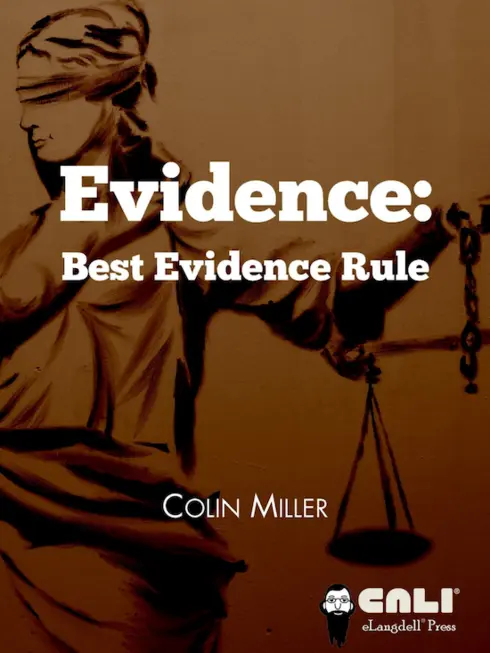
Evidence: Best Evidence Rule
No ratings
Colin Miller, University of South Carolina
Copyright Year:
Publisher: CALI's eLangdell® Press
Language: English
Formats Available
Conditions of Use
![]() Attribution-NonCommercial-ShareAlike
Attribution-NonCommercial-ShareAlike
CC BY-NC-SA
Table of Contents
- I. Historical Origins of the Best Evidence Rule
- II. Article X: The Modern Best Evidence Rule
About the Book
The Best Evidence Rule, contained in Article X of the Federal Rules of Evidence (Rules 1001-1008) and state counterparts, is a Rule that requires a party seeking to prove the contents of a writing, recording, or photograph to produce the original (or a duplicate) or account for its nonproduction. Through a series of cases and hypotheticals drawn from actual cases, this chapter gives readers a roadmap for how to address any Best Evidence Rule issue in practice.
Faculty materials also available:
In addition to the free, open learning materials for students listed above, this eLangdell chapter includes a teacher's manual. Faculty and staff at CALI member schools can access these materials by logging in to eLangdell with a cali.org username and password. Contact CALI.
About the Contributors
Author
Colin Miller is an associate professor at the University of South Carolina where he teaches Evidence, Criminal Procedure, Criminal Law, and Civil Procedure. He is the creator and editor of EvidenceProf Blog, a member of the Law Professor Blogs Network. He is the editor of Illinois Criminal Procedure and drafted a 100 page report comparing the Federal Rules of Evidence to Illinois evidentiary principles, which was used in the creation of the first Illinois Rules of Evidence.
Professor Miller received his B.A. degree with distinction from the University of Virginia and his J.D. (Order of the Coif) from the William & Mary Law School.
Ancillaries
Student Resources
- CALI's eLangdell® Press (by request)
